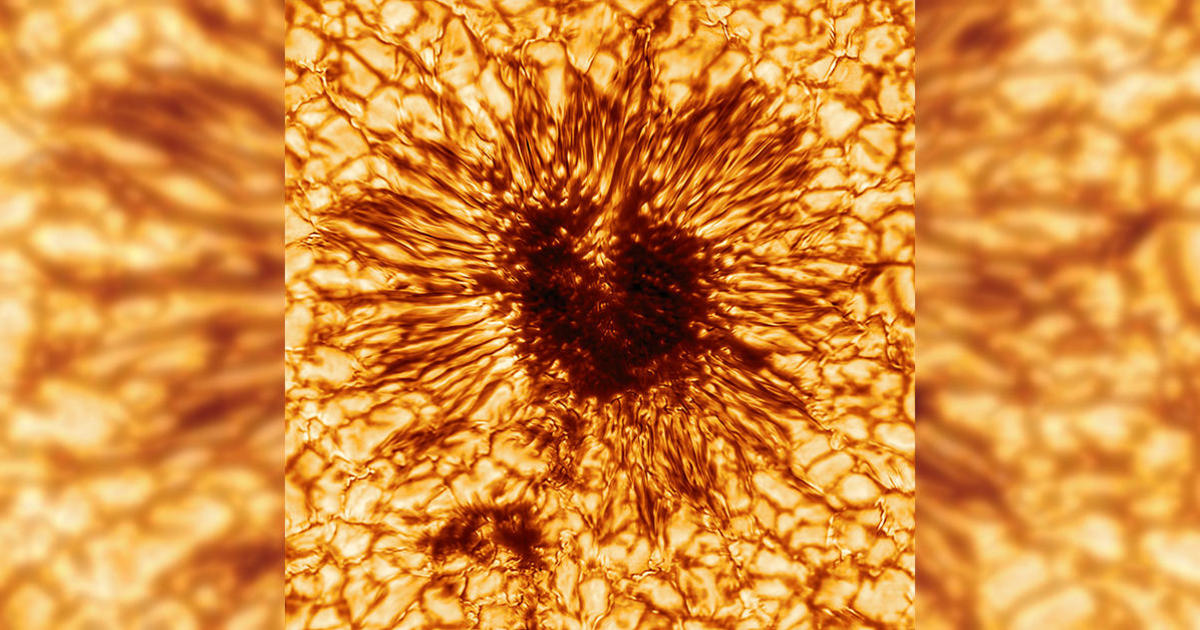The world’s largest solar observatory has captured a sunspot, bigger than the entirety of Earth, in “unprecedented” detail. The heart-shaped spot is just one of many, responsible for solar storms that affect life on Earth.
The U.S. National Science Foundation’s Daniel K. Inouye Solar Telescope in Hawaii won’t go into full operation until next year. But last January, it managed to capture the highest-resolution image of a sunspot yet, the observatory recently announced.
The image captures the incredible details of the structure of the sunspot on the surface of our solar system’s star. “The streaky appearance of hot and cool gas spidering out from the darker center is the result of sculpting by a convergence of intense magnetic fields and hot gasses boiling up from below,” the observatory said.
The dark area in the center is cooler than the other parts of the sun — but still extremely hot at more than 7,500 degrees Fahrenheit.
This is the first sunspot image taken on January 28, 2020, by the NSF’s Inouye Solar Telescope’s Wave Front Correction context viewer. The image reveals striking details of the sunspot’s structure as seen at the Sun’s surface. The sunspot is sculpted by a convergence of intense magnetic fields and hot gas boiling up from below. This image uses a warm palette of red and orange, but the context viewer took this sunspot image at the wavelength of 530 nanometers – in the greenish-yellow part of the visible spectrum. This is not the same naked eye sunspot group visible on the Sun in late November and early December 2020.
NSF/NSO/AURA
The enormous sunspot is approximately 10,000 miles across, taking up just a tiny part of the sun — but still large enough that Earth could “comfortably fit inside,” scientists said.
Scientists say that the powerful image indicates the telescope’s advanced optics, which are expected to provide the best view of the sun from Earth during the next 11-year solar cycle.
“The sunspot image achieves a spatial resolution about 2.5 times higher than ever previously achieved, showing magnetic structures as small as 20 kilometers on the surface of the sun,” said Dr. Thomas Rimmele, who authored a study that accompanies the release of the photo.
Sunspots are the clearest representation of activity on the sun — the more sunspots there are, the more active the sun is. During its last cycle, December 2019 marked the time of the fewest sunspots.
NSF’s Inouye Solar Telescope sits near the summit of Haleakalā in Maui, Hawaiʻi. It is expected to begin operations in 2021.
NSO/AURA/NSF
This new sunspot is one of the first of the new solar cycle, which is expected to reach peak activity in mid-2025.
“With this solar cycle just beginning, we also enter the era of the Inouye Solar Telescope,” said Dr. Matt Mountain, president of the Association of Universities for Research in Astronomy, the organization that manages the observatory. “We can now point the world’s most advanced solar telescope at the Sun to capture and share incredibly detailed images and add to our scientific insights about the Sun’s activity.”
Sunspots are responsible for causing many space weather events, which have major impacts on Earth. Accurately studying the sun’s magnetic activity is crucial to protecting power grids, communications, GPS navigation, air travel, satellites and astronauts living in space.
“While the start of telescope operations has been slightly delayed due to the impacts of the COVID-19 global pandemic,” said Dr. David Boboltz, NSF Program Director for the telescope, “This image represents an early preview of the unprecedented capabilities that the facility will bring to bear on our understanding of the sun.”
